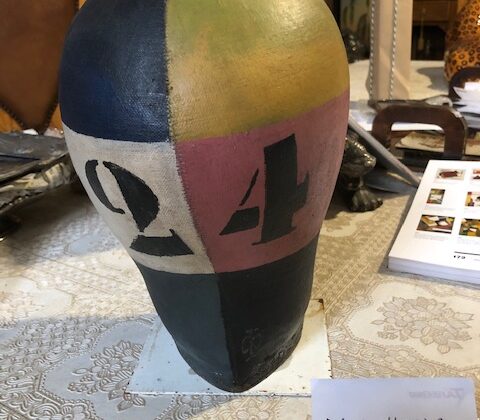When trust can change life: a case of Arnold – Chiari Syndrome
Carelli Francesco , Professor for Family Medicine, University of Milan
Ioni Barbara , Intern trainee FM , University of Milan
Censabella Federica, Intern trainee FM, University of Milan
Mesina Marina, neurologist, Milan
In daily family medicine practice we often meet complex, multifaceted and unusual physical and psychological manifestations, needing not only sophisticated technical instruments and diagnostic ability, but also communication and empathy skills, so fundamental in family medicine.
A 48 years old patient, treated for hypertension with angiotensin II inhibitor and diuretic, came to our practice complaining of pain at skull- cervical level associated with pulsation, sweating, nausea and dizziness, exacerbated by cough and worsening during last months, with episodic dysphagia for liquids.
Suspecting central nervous system disease and looking for better understanding of this clinical situation, so disturbing also psychologically for the patient in his full working life, we requested a Cerebral Magnetic Resonance Imaging.
MRI showed cerebellar tonsils descent through Foramen Magnum, suggesting diagnosis of Arnold – Chiari Malformation type I.
The prospects of surgery as the only possible therapy, shocked and distraught the patient probably because of pre- concieved ideas and negative expectations, mainly because of the site of intervention (skull and its contents).
The opportunity to take time to explain the situation and trust relationship established during the years with the patient, allowed to tackle step by step the absolute negativity to undergo surgery , even if delicate, and to push him to consult a very good centre of neurosurgery, where he was admitted for intervention.
No abnormalities at blood tests, and general objective examination and clinical history did not reveal any significant abnormalities allowed to plan an elective decompression surgery at atloido-occipital junction in Arnold – Chiari Syndrome type I.
In operation theatre, after longitudinal incision from inion to VII cervical vertebra and muscles detachment, and exposure of occipital bone and posterior arch of C1 and C2, the patient was submitted to median sub-occipital craniectomy with partial demolition of hypertrophic posterior arch of C1 and erosion of superior part of C2. At microscopy, after medial incision of the pachymeninx, it was possible to see in the arachnoid the tonsils migrated downward so far as C1.
For decompression, a rhombus shaped dural plastic was sutured and fibrin glue and Surgicell were added. The post-operative period was uneventful, without further neurological deficits, i.m.steroids for three days ( dexametason 4mg in the morning ) associated with anti-thrombosis drugs, proton pump inhibitors and NSAID on demand were prescribed. Due to reabsorbable intradermal suture , no redressment was needed.
At follow up visit at 45 days, symptoms were solved and a newly smiling man came back to family and working life, and visited our practice.
Because of particularity of this case and because our early intervention revealed to be fundamental to relieve and solve patient’s disturbances, it could be useful to speak more about this rare malformation.
Arnold – Chiari Syndrome, so called in honor of Julius Arnold and Hans Chiari, the two doctors who first studied it, is a rare pathology including an heterogeneous group of structural anomalies in posterior fossa ,with herniae through Foramen Magnum of parts of cerebellum and brainstem.
Up to now there are not so precise data on prevalence and /or incidence of this disease; there is some familiarity, but not identified genetic components. It has been classified into four different sub-groups, with differences in age of onset, ethiology and severity.
Arnold – Chiari malformation type I is typical in young patients, characterized by one or both cerebellar tonsils herniated through Foramen Magnum. It is associated with syringomyelia (20-85% cases) or more rarely with hydrocephalus. Usually asymptomatic, it can be discovered during examinations for other reasons. When symptomatic, there is headache and neck pain. Other less frequent signs and symptoms are: tremors, ataxia, eye disturbances, nystagmus, vertigo, dysphagia, nocturnal apnoea, heart rate alterations.
Type II is characterized by hernia of cerebellar tonsils , vermis and bulb with IV ventricular extension. Cerebellar hemispheres are often asymmetrical and flattened. This Type II is always associated with neural tube defects and in 80% of cases with hydrocephalus. It may also be asymptomatic, but more frequently can be seen already in pediatric age with last cranial nerves deficit, swallowing disturbances, laryngeal screeching because of vocal cords paralysis, cerebellar disturbances like opistothonus, nystagmus, ataxia , nocturnal apnoea.
Type III, the rarest one, shows hernia of the whole cerebellum through Foramen Magnum. It is evident at birth and carries bad prognosis and fast death.
Type IV is not compatible with life because of completely lacking encephalic structures development.
To diagnose Arnold – Chiari Syndrome in suspect cases, MRI is the examination of choice, because it shows the presence and entity of brain structures dislocation.
The only treatment is neurosurgical. Neurosurgical intervention can enlarge posterior cranial fossa with sub-occipital decompression. So, good relationship between patient and family doctor is fundamental to make early diagnosis and bring the patient to neurosurgical intervention, that can eliminate all related symptoms, which are frequently so invalidating for these patients.
References
. Harrison, Principle of Internal Medicine , McGraw-Hill, 16th Italian Edition
Consulted web:
. www.institutchiaribcn.com
. www.aismac.org


